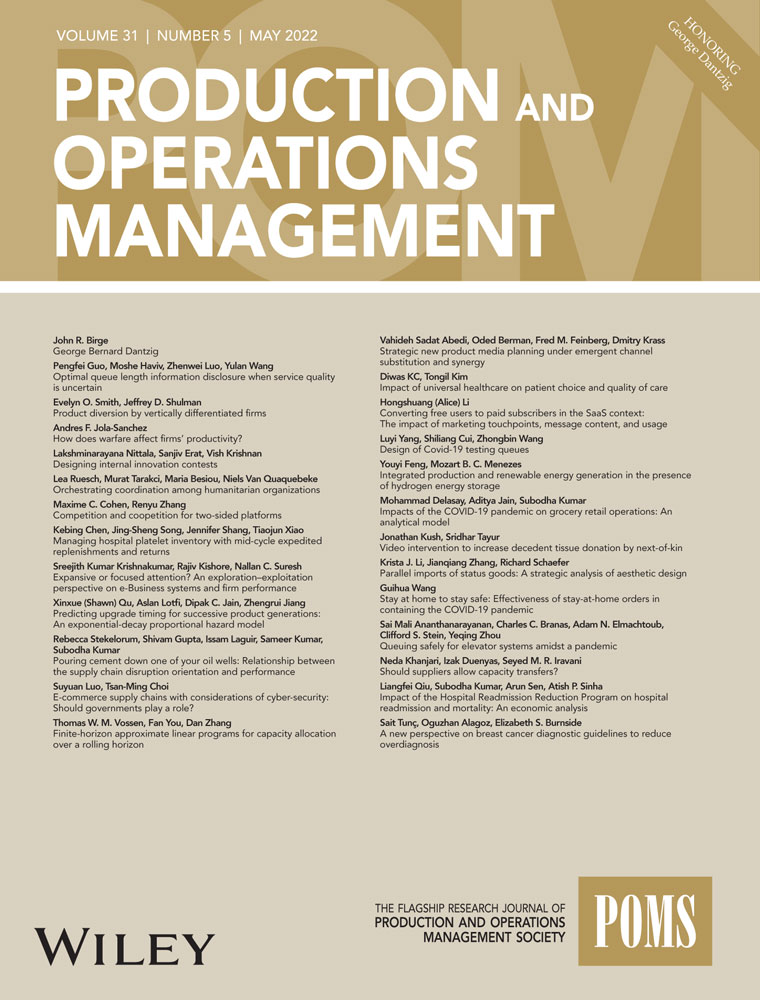George Bernard Dantzig
Corresponding Author
John R. Birge
University of Chicago Booth School of Business, Chicago, USA
Correspondence
John R. Birge, University of Chicago Booth School of Business, Chicago, IL 60637, USA.
Email: [email protected]
Search for more papers by this authorCorresponding Author
John R. Birge
University of Chicago Booth School of Business, Chicago, USA
Correspondence
John R. Birge, University of Chicago Booth School of Business, Chicago, IL 60637, USA.
Email: [email protected]
Search for more papers by this authorAccepted by Kalyan Singhal, after one revision.
Abstract
George Dantzig introduced the world to the power of optimization, creating trillions of dollars of value and saving countless years of life across the globe. Linear programs and Dantzig's many other contributions to optimization have driven enormous increases in productivity throughout the global economy. Linear programming has also become a vital tool in advancing artificial intelligence and machine learning.
REFERENCES
- Abouelseoud, G., Abouelseoud, Y., Shoukry, A., Ismail, N., & Mekky, J. (2018). A mixed integer linear programming approach to electrical stimulation optimization problems. IEEE Transactions on Neural Systems and Rehabilitation Engineering, 26(2), 527–537. https://doi.org/10.1109/TNSRE.2018.2789380
- Albers, D. J., & Reid, C. (1986). An interview with George B. Dantzig: The father of linear programming. The College Mathematics Journal, 17(4), 293–314. https://doi.org/10.1080/07468342.1986.11972971
10.1080/07468342.1986.11972971 Google Scholar
- Alicke, K., & Lösch, M. (2010). Lean and mean—How does your supply chain shape up?. McKinsey & Company. https://www.mckinsey.com/~/media/mckinsey/dotcom/client_service/operations/pdfs/lean_and_mean-how_does_your_supply_chain_shape_up.ashx
- Battesini, M., Coelho, H. D. S., & Seta, M. J. (2018). Uso de programação linear para otimizar o acesso geográfico em redes temáticas de atenção à saúde [Use of linear programming to optimize geographic access in specialized healthcare networks]. Cadernos De Saude Publica, 34(7), 1–14. https://doi.org/10.1590/0102-311x00055017
- Bowser, M. (2013). Unlocking the Champion Within: The Keys to Successful Living, Issaquah, WA: AudioInk Publishing.
- Carlson, B., Chen, Y., Hong, M., Jones, J., Larson, K., Ma, X., Nieuwesteeg, P., Song, H., Sperry, K., Tackett, M., Taylor, D., Wan, J., & Zak, E. (2012). MISO unlocks billions in savings through the application of operations research for energy and ancillary services markets. Interfaces, 42(1), 58–73. https://doi.org/10.1287/inte.1110.0601
- Cipra, B. (2000). The best of the 20th century: Editors name top 10 algorithms. SIAM News, 33(4), 1–2.
- Dantzig, G. B. (1946). I—Complete form Neyman-Pearson fundamental lemma; II—On the non-existence of tests of “Student's” hypothesis having power functions independent of sigma [Ph.D. dissertation, University of California].
- Dantzig, G. B. (1985). Impact of linear programming on computer development. Technical Report SOL 85-07, Stanford University. https://apps.dtic.mil/dtic/tr/fulltext/u2/a157659.pdf
- Dantzig, G. B. (1990). The diet problem. Interfaces, 20(4), 43–47. https://doi.org/10.1287/inte.20.4.43
- Dantzig, G. B. (2002). Linear programming. Operations Research, 50(1), 42–47. https://doi.org/10.1287/opre.50.1.42.17798
- Dantzig, G. B. (2003). The basic George B. Dantzig, edited by R.W. Cottle, Stanford Business Books.
- Dantzig, G. B., & Wald, A. (1951). On the fundamental lemma of Neyman and Pearson. Annals of Mathematical Statistics, 22(1), 87–93. https://doi.org/10.1214/aoms/1177729695
10.1214/aoms/1177729695 Google Scholar
- Dilda, V., Mori, L., Noterdaeme, O., & Van Nie, J. (2018). Using advanced analytics to boost productivity and profitability in chemical manufacturing. McKinsey & Company. https://www.mckinsey.com/industries/chemicals/our-insights/using-advanced-analytics-to-boost-productivity-and-profitability-in-chemical-manufacturing#
- Han, A. X., Parker, E., Scholer, F., Maurer-Stroh, S., & Russell, C. A. (2019). Phylogenetic clustering by linear integer programming (PhyCLIP). Molecular Biology and Evolution, 36(7), 1580–1595. https://doi.org/10.1093/molbev/msz053
- Neyman, J., & Pearson, E. S. (1933). IX. On the problem of the most efficient tests of statistical hypotheses. Philosophical Transactions of the Royal Society of London Series A, 231(694–706), 289–337.
10.1098/rsta.1933.0009 Google Scholar
- O'Connor, J. J., & Robertson, E. F. (2003). George Dantzig. School of Mathematics and Statistics, University of St. Andrews, http://mathshistory.st-andrews.ac.uk/Biographies/Dantzig_George.html
- Phillips, R. (2005). Pricing and revenue optimization. Stanford University Press.
10.1515/9780804781640 Google Scholar
- Qiu, Y., Jiang, H., Ching, W. K., & Cheng, X. (2018). Discovery of Boolean metabolic networks: Integer linear programming based approach. BMC Systems Biology, 12(Suppl 1), 7. https://doi.org/10.1186/s12918-018-0528-3
- M.G.C. Resende, & P. Pardalos. (Eds.) (2006). Handbook of optimization in telecommunications. Springer.
10.1007/978-0-387-30165-5 Google Scholar
- Shuller, R. H. (1993). Power thoughts: Achieve your true potential through power thinking. HarperCollins.
- Sjölund, J., Riad, S., Hennix, M., & Nordström, H. (2019). A linear programming approach to inverse planning in Gamma Knife radiosurgery. Medical Physics, 46(4), 1533–1544. https://doi.org/10.1002/mp.13440
- Stigler, G. J. (1945). The cost of subsistence. Journal of Farm Economics, 27(2), 303–314. https://doi.org/10.2307/1231810
- Tibshirani, R. (1996). Regression shrinkage and selection via the lasso. Journal of the Royal Statistical Society. Series B (Methodological), 58(1), 267–288. https://doi.org/10.1111/j.2517-6161.1996.tb02080.x




